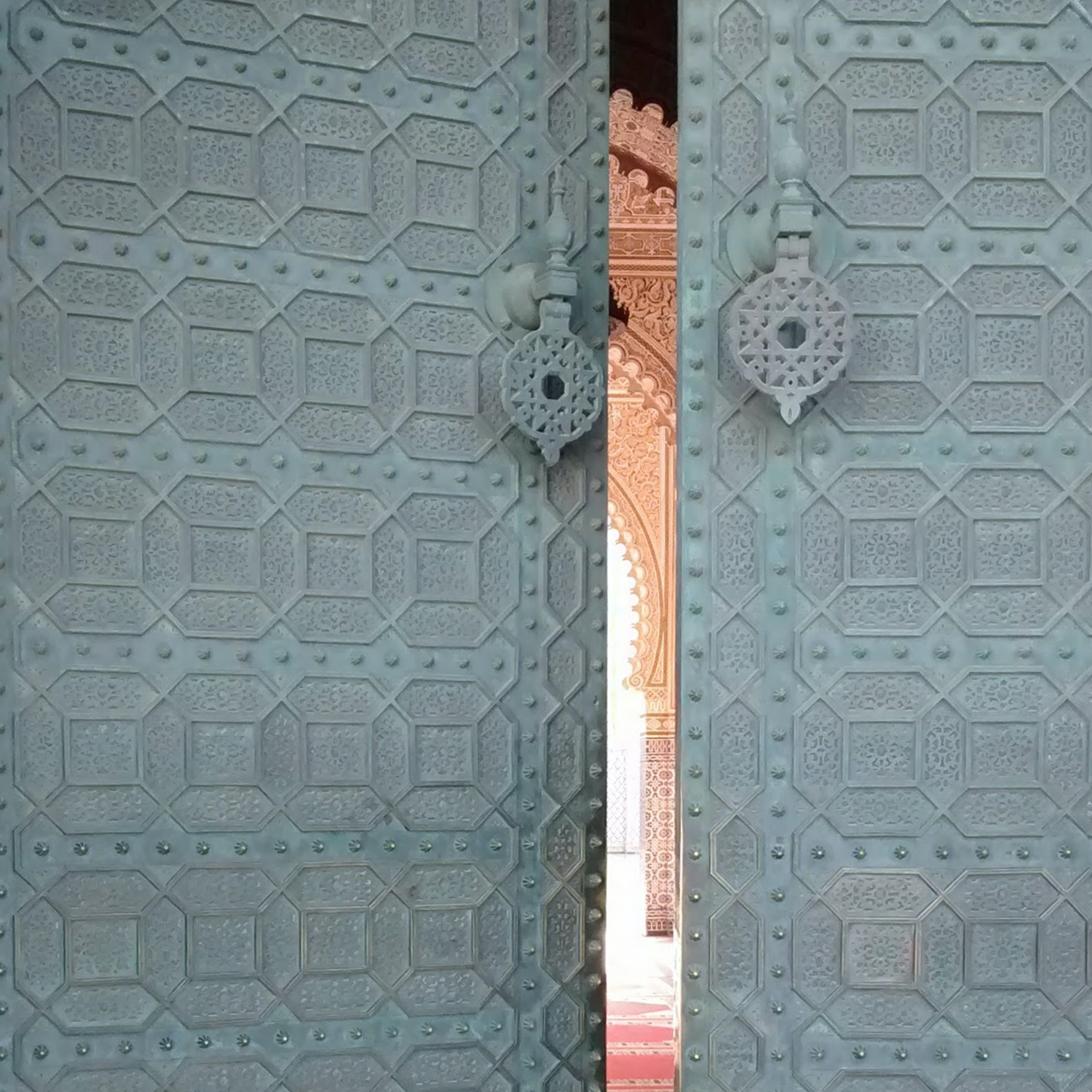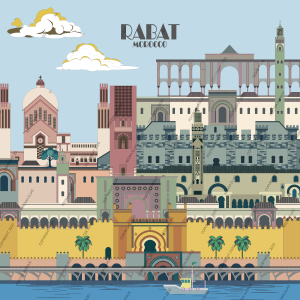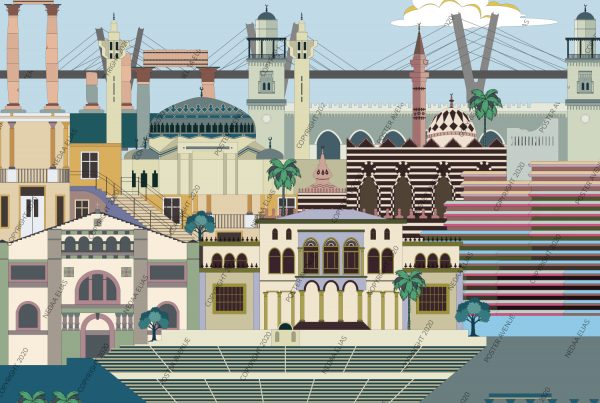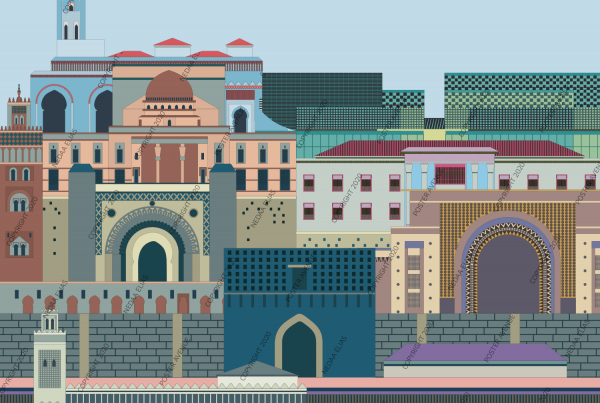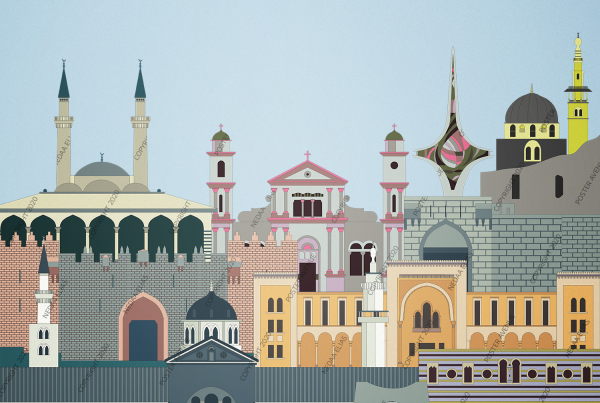Located on the coast of the Atlantic Ocean, Rabat, the national and political capital of modern Morocco, is home to numerous examples of Islamic art and architecture. Varying from the ornamentation and the geometric patterns to the friezes and open courtyards, reaching the iconic specialty of riads. The country’s architectural history is shaped by several waves of settlers, starting from the indigenous Berber (Amazigh), followed by the Arab-Islamic propagation, then the European colonization, resulting in a modern-day cosmopolitan kingdom. The architecture exemplifies a heterogeneous cultural blend, which mirrors the country’s rich and branched history. Rabat, originally a small town, was foreseen by Almohad ruler (Yacoub EL Mansour) to become his new capital, due to its strategic location for exchange between the empire’s former capital, Marrakech, and the Western world.

Commissioned by Yacoub EL Mansour, the third caliph of the Amazigh dynasty of Almohad, the Hassan Tower of Rabat was modeled to resemble the minaret of Koutoubia Mosque in Marrakech and the later built Giralda tower in Seville. The three towers have a very similar architectural composition reflecting the Almohad minarets. They are distinguished by the tall rectangular shape, the Islamic calligraphy, and the exquisite stonework. Hassan Tower was intended to become the minaret of the second largest mosque in the 12th century Islamic world, celebrating the victory of the ruler in his conquest, but the structure was never completed. The remarkable unfinished Hassan minaret along with the great marble floor and the surviving columns showcase the immense scale of the unbuilt mosque. The area was designed to house multiple buildings for worship and education. Nowadays it is listed under the UNESCO world heritage sites.
The current largest mosque in Rabat is the Assounna Mosque. It was completed in the 18th century by the Alaouite Sultan Moulay Mohammed ben Abdallah. As its name suggests it represents the Sunni sect in Islam. Located along the Avenue Mohammed V Boulevard, near the Royal Palace, the mosque is favorable for the royal family and the elite class of the society. The building has a square plan, inside of it a rectangular courtyard, surrounded by a portico arcade. The exterior walls are all white, protruded by several highly decorated stone gateways. The fine ornaments found on the gateways and the square minaret have a traditional Moroccan essence. Located a few meters away, the Dar al-Makhzen Palace constitutes the principal royal residence. Commissioned by the royal family in the 19th century, the palace is a large walled complex, housing several functional buildings and residences. The main entrance gate is highly decorated, featuring the local zellij (Moroccan mosaic tilework), carved wood, geometric Islamic motifs, and brass doors. The palace is surrounded by gardens inspired by the French formal gardens.
Being a full-fledged city, the architectural glossary of Rabat contains several monuments. For instance, Fort Rottembourg, built during the 19th century, owes its name to the German engineer who supervised its construction. Located on a slight hill, it features defensive masonry walls with slated sides and six watchtowers. Another monument is the Porch door Alruah, one of the gates of the old medina, it reflects the authenticity of Moroccan stone ornamentation. A much older monument is the Chellah Necropolis, a medieval fortified Muslim cemetery, and a former city founded by the early Muslim conquerors. During Almohad dynasty, the site was adapted to function as a royal cemetery. The ruins of this complex still stand nowadays.
Adding to the variety of cultural heritage of the city, St. Peter’s Cathedral was built during the French protectorate in the 1930s. It follows an Art Deco style, being daring yet respectful to the local character of the capital city. The monumental geometric composition of the building along with the two distinctive square bell towers, outline Rabat’s skyline. The colorful stained glass with traditional patterns, the triangular structures, and the configuration of the bell towers mimicking the Moroccan minarets, all these features suggest the assimilating character of the cathedral.

The city does not only comprise historic and traditional buildings, it also embraces modernity that can be observed in Museum Mohamed VI of Modern and Contemporary Art and Hassan II Bridge. While the museum reinterprets traditional Moroccan architectural features in modern composition, the bridge respects the overall horizontality of the surrounding built environment with its delicate blending appearance. Founded in 2014, the MMVI museum preserves the secular heritage of the country whilst reinventing its traditional motifs. This can be noted by the perforated wall screens, the chromatic façade, the two levels of arcades, and the zellij strip. While the chromatic façade provides different colors to the white building during the night, the screens provide different plays of light and shadow during the day. Ending with the ground-breaking urban infrastructure project, Hassan II Bridge links the two historic cities Rabat and Salé. The concrete structure is supported by a series of distorted arced forms, which are in harmony with the historic setting.
Rabat is a city with a unique character and a long history. It embraces the preservation of its prestigious historical image along with reinforcing a modern and progressive language.



